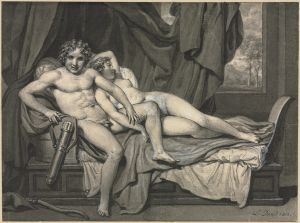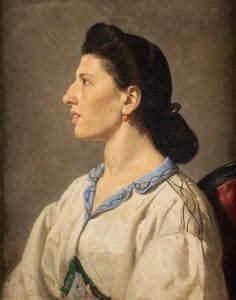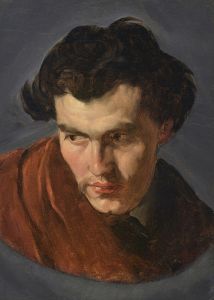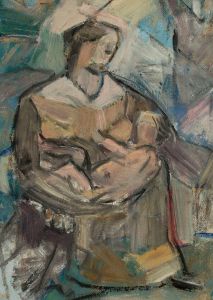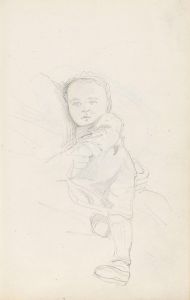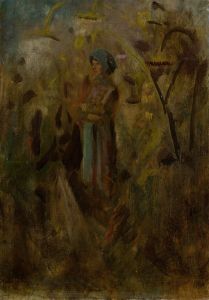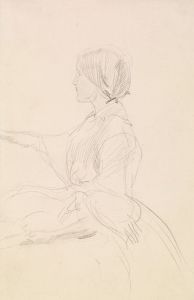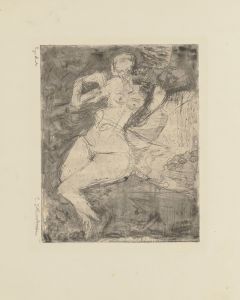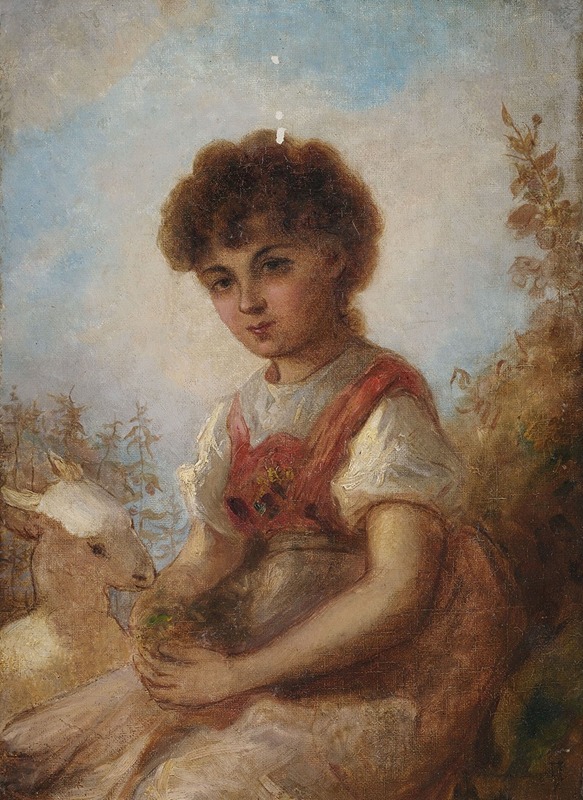
Kleines Mädchen mit einer Ziege
A hand-painted replica of Anselm Feuerbach’s masterpiece Kleines Mädchen mit einer Ziege, meticulously crafted by professional artists to capture the true essence of the original. Each piece is created with museum-quality canvas and rare mineral pigments, carefully painted by experienced artists with delicate brushstrokes and rich, layered colors to perfectly recreate the texture of the original artwork. Unlike machine-printed reproductions, this hand-painted version brings the painting to life, infused with the artist’s emotions and skill in every stroke. Whether for personal collection or home decoration, it instantly elevates the artistic atmosphere of any space.
Anselm Feuerbach was a prominent German painter of the 19th century, known for his classical style and historical themes. One of his works, "Kleines Mädchen mit einer Ziege" (translated as "Little Girl with a Goat"), exemplifies his skill in portraiture and his ability to capture the innocence and simplicity of childhood.
Feuerbach was born on September 12, 1829, in Speyer, Germany, into a family with a strong artistic and academic background. His father, Joseph Anselm Feuerbach, was a well-known archaeologist, which likely influenced Anselm's interest in classical themes. Feuerbach studied at various prestigious art institutions, including the Düsseldorf Academy and the Academy of Fine Arts in Munich. He also spent time in Paris, where he was influenced by the works of Gustave Courbet and Eugène Delacroix, and later in Italy, where he immersed himself in the Renaissance art that would greatly impact his style.
"Kleines Mädchen mit einer Ziege" is a lesser-known work compared to some of Feuerbach's grand historical and mythological paintings, but it is significant in its own right. The painting depicts a young girl standing beside a goat, capturing a moment of serene interaction between the two. Feuerbach's use of soft, muted colors and delicate brushwork highlights the gentle nature of the scene. The girl's expression is calm and contemplative, suggesting a quiet bond between her and the animal.
The composition of the painting is simple yet effective, focusing on the relationship between the girl and the goat. Feuerbach's attention to detail is evident in the textures of the girl's clothing and the goat's fur, demonstrating his technical proficiency. The background is kept minimal, ensuring that the viewer's attention remains on the central figures.
Feuerbach's work often reflected his interest in classical antiquity and idealized beauty, and while "Kleines Mädchen mit einer Ziege" is more intimate and personal than some of his other works, it still embodies these themes. The painting can be seen as a reflection of the artist's ability to convey emotion and narrative through portraiture, a skill that made him one of the leading figures of the German art scene in the 19th century.
Throughout his career, Feuerbach struggled with gaining widespread recognition in Germany, despite his talent and the high regard in which he was held by his peers. He spent a significant portion of his life in Italy, where he felt a deeper connection to the artistic heritage and where he produced many of his most important works. It was only later in his life and posthumously that his contributions to art were fully appreciated.
Anselm Feuerbach passed away on January 4, 1880, in Venice, Italy. Today, his works are held in various collections and museums, and he is remembered as a master of classical painting who bridged the gap between the Romantic and Realist movements. "Kleines Mädchen mit einer Ziege" remains a testament to his ability to capture the essence of his subjects with grace and sensitivity.





